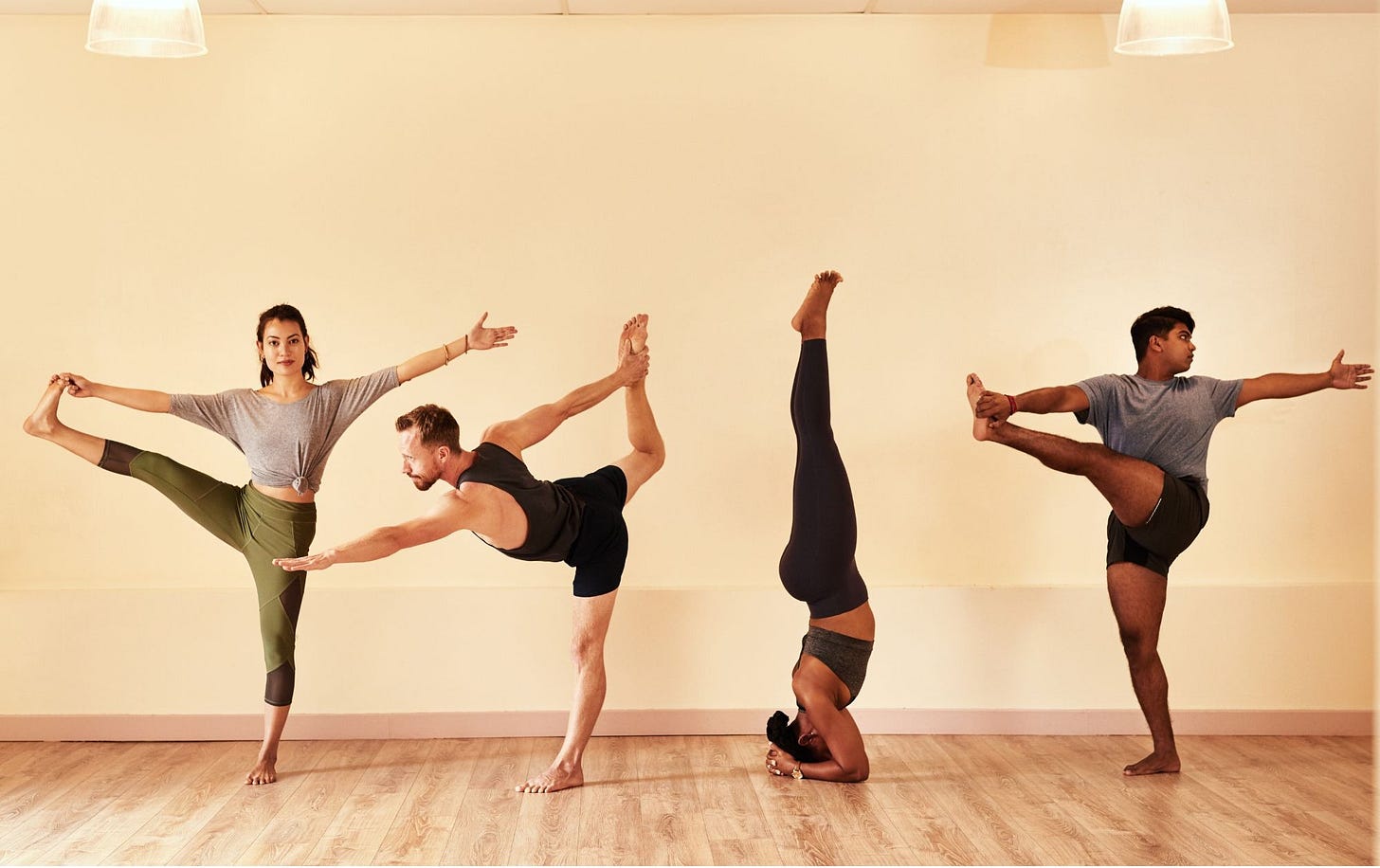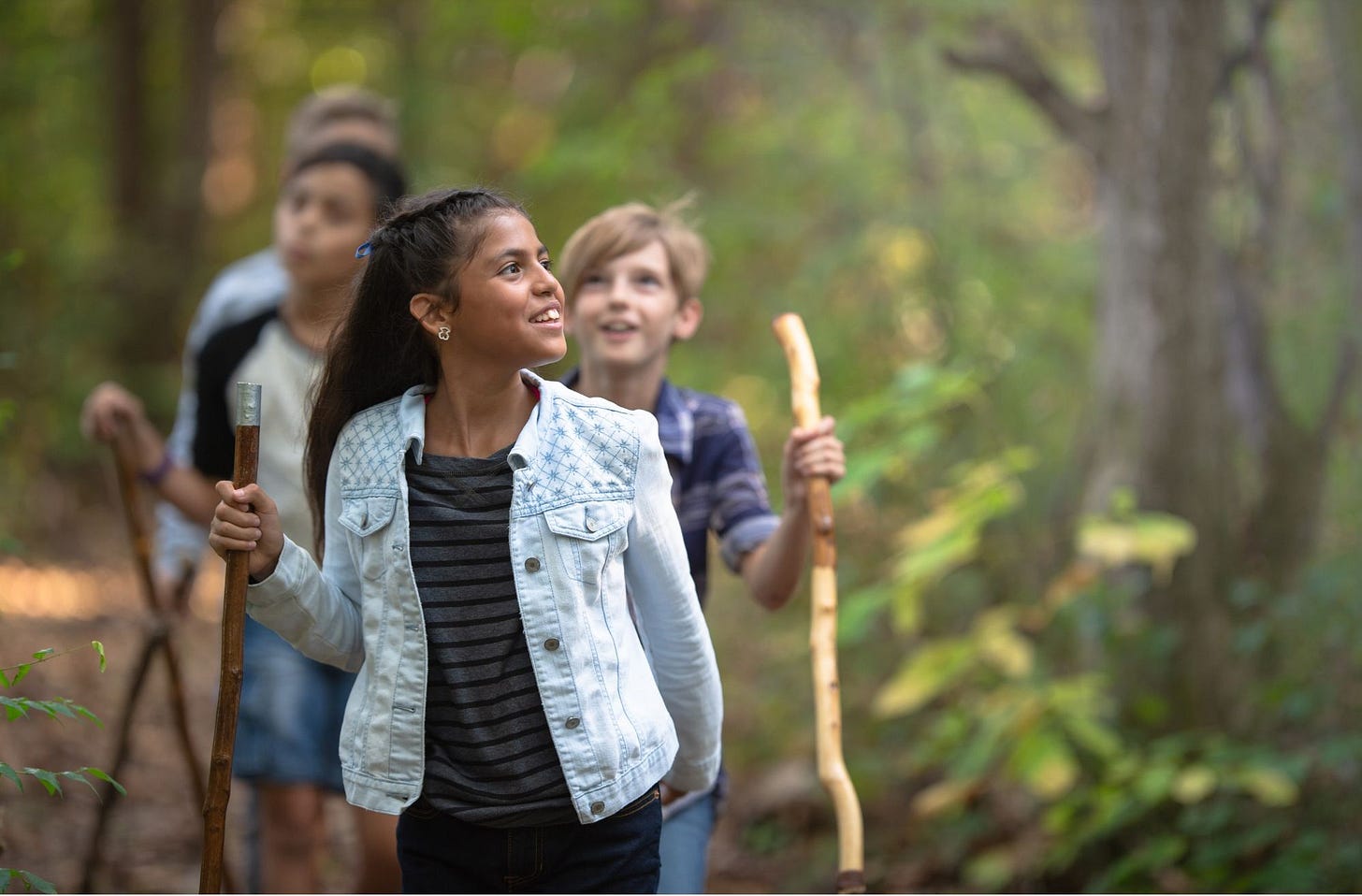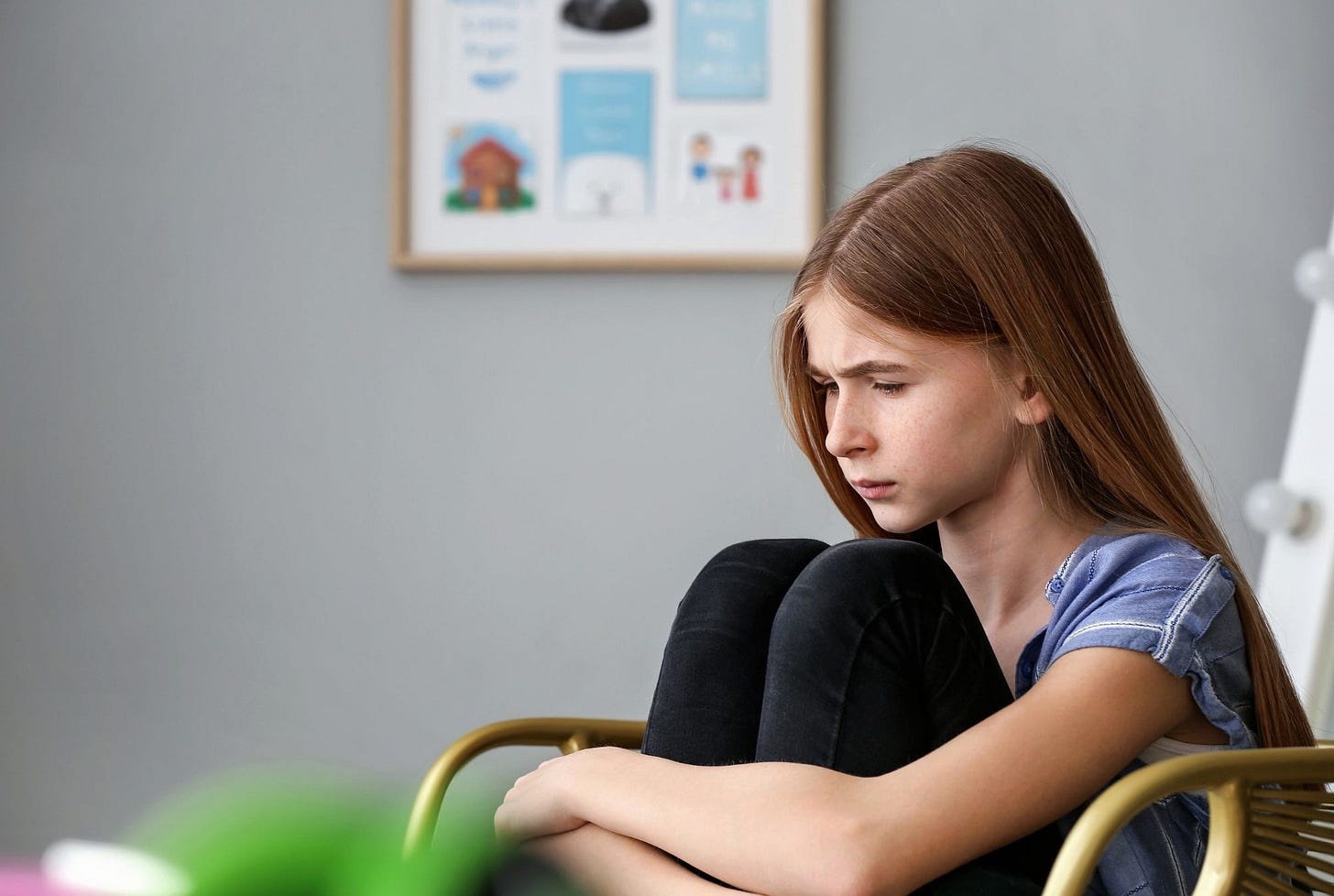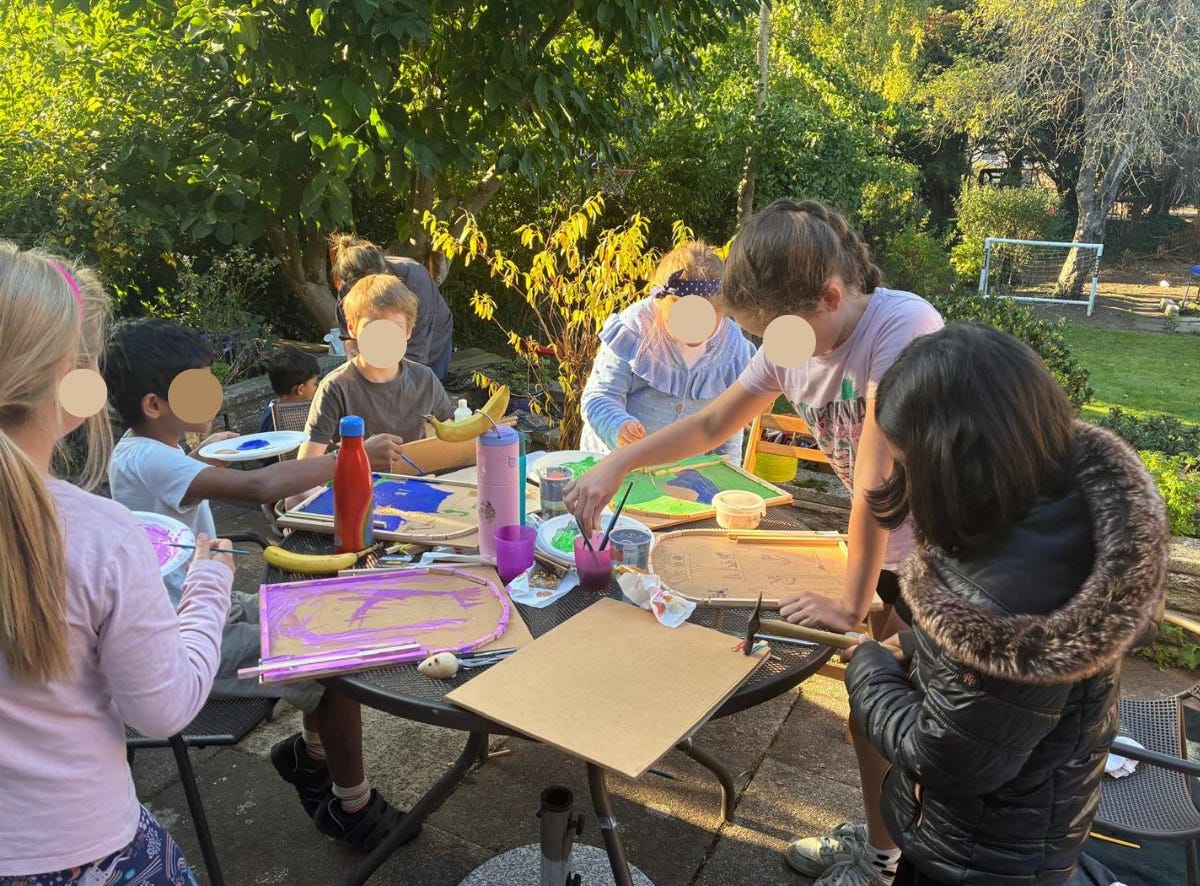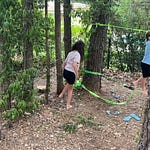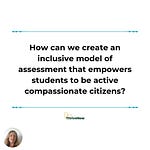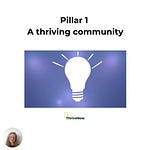Three years ago my dad became suddenly and unexpectedly quadriplegic. Once the shock passed, I found myself deeply curious, and grateful about movement. Something so ordinary, that most of us barely notice, suddenly felt extraordinary.
This personal loss became a professional awakening. I began to understand why the most powerful learning I’d witnessed always involved the body, not just the mind.
When learning makes children whoop
When I taught Design & Technology and Forest School, children used to whoop with delight when I arrived to collect them for lessons. As much as I’d like to think that was because I’m an extraordinary teacher, I learnt that their excitement came from something much deeper.
D&T is inherently embodied: it’s practical, agentic, and invites young people to respond to real tools, real materials, and real challenges. There’s a safe element of risk in using tools and machinery, in climbing a tree or navigating a trail, a tangible sense of mastery when something is built, fixed, designed, or even felt through the body’s intelligence.
I see it again and again in our after-school D&T clubs and outdoor learning sessions. Even after a long day in classrooms, learners light up when they can learn through lived, physical experience, learning that is liberating and curiosity-led. They move, make, ponder, and test ideas in real time. Through that process, they think more deeply and reflect more authentically. The learning sinks into their minds and bodies simultaneously.
Research suggests that this kind of learning doesn’t come at the cost of academic mastery. In fact, embodied approaches may well enhance it.
Embodied learning is about awareness, not just activity
But embodied learning isn’t just about movement for movement’s sake. At its heart, it’s about awareness, being attuned to one’s body in learning. For some learners, that means stretching, building, creating, or experimenting through movement. For others, it means noticing when movement or sensory input becomes too much, and responding with quiet, stillness, or separation.
True embodied learning honours both. It’s about helping learners tune into their own emotional and physical regulation. That might look like a young person quietly stepping outside for air, lying under a tree during an outdoor session, or grounding themselves with sensory tools before re-engaging.
In some schools, this awareness is being cultivated through structured practices like the Alexander Technique, the Feldenkrais Method, yoga and mindful movement, or even body scans and breathing routines built into the school day. In others, it’s embedded in how learners are invited to create and use space, materials, and their senses throughout the day.
We are working with Guy Claxton and Emily Poel, amongst many others, on embodied learning. Their ideas resonated deeply because I had already witnessed the benefits of this approach. Learning through making felt natural, it mirrored how we all begin our learning journeys as babies and toddlers, through full sensory engagement and movement.
What the research tells us
Children who learn letter-sounds through whole-body movements retain knowledge longer than those using only hand movements or static methods[1]. Physical activity directly boosts attention, memory, executive functioning, curiosity, and intrinsic motivation.
Yet adults now sit for 70% of their lives, and children move 30% less than in the 1960s. This inactivity correlates with rising anxiety, depression, lower self-esteem, and even falling IQ scores (Williams, Move). Meanwhile, education models that integrate movement, play, and emotional attachment, such as those widely adopted in Finland, are associated with improved focus, lower rates of ADHD diagnosis, and stronger social skills (Pasi Sahlberg, Finnish Lessons).
If we know movement stimulates cognitive function and we have seen the evidence in practice, why don’t our schools, especially secondary schools, reflect that in their environments?
Understanding the constraints
I understand the obstacles. Timetabling pressures are real. Exam specifications feel non-negotiable. Classroom spaces weren’t designed for movement. Teachers haven’t been trained to facilitate embodied learning. These are genuine constraints, not excuses.
But here’s what I’ve learnt: we don’t need to revolutionise everything overnight. Small shifts create significant change. Five minutes of purposeful movement before tackling a complex maths problem. Learning vocabulary through gestures. Taking discussions outside. Designing projects where young people make, move, and think simultaneously.
Too often, young people are asked to sit still for hours. They memorise without context. They perform without movement. No wonder so many feel fatigued, apathetic, or stressed. Balance is key: learning is most powerful when it is active, embodied, and meaningful, but also responsive to the body’s rhythms and needs.
What we’re doing about it
At ThriveNow, we are building on these principles. This year, we’re launching an action research project with secondary-aged learners to:
Review the research on embodied learning
Collect learner-centred data on agency, motivation, and metacognition
Test small-scale approaches that link movement to curriculum knowledge and skills
Develop a flexible framework, backed by deep research in practice, to share openly with anyone who wants to try it in their own settings
Our vision is simple: a school where young people thrive, families feel welcome, and learning is joyful and holistic. A school where movement and learning aren’t separate, but inseparable.
What’s one way you could integrate 5 minutes of purposeful movement into your next lesson or learning experience?
Try it. Notice what shifts. Then try it again.
If you’d like support bringing embodied approaches into your setting, whether that’s an INSET session on inquiry pedagogy, designing cross-curricular projects, or developing student-led assessment practices, I’d love to explore what’s possible together.
With gratitude,
Kimberley.
PS: Through ThriveNow’s partnership with the Novus Learning Network, we help both in-person and online schools bring our four pillars to life: inclusive community, inquiry pedagogy, transdisciplinary curriculum, and formative assessment. This can look like building inclusive, learner-centred curricula rooted in metacognition, creativity, and play; developing outdoor, STEAM, and transdisciplinary learning pathways; integrating multi-modal, formative assessment that recognises the whole learner; or leading school transformation strategies centred on trust, curiosity, and connection.
[1] A controlled study found children who learned letter-sounds through whole-body movements retained the knowledge longer than those using only hand movements or static methods (Damsgaard et al., Educational Psychology Review (2022) 34:1709–1737). Reviews consistently show that physical activity is positively linked with attention, memory, and executive functioning. Movement doesn’t just support wellbeing; it literally boosts cognition, curiosity, and intrinsic motivation (Deci & Ryan, Self-Determination Theory).


